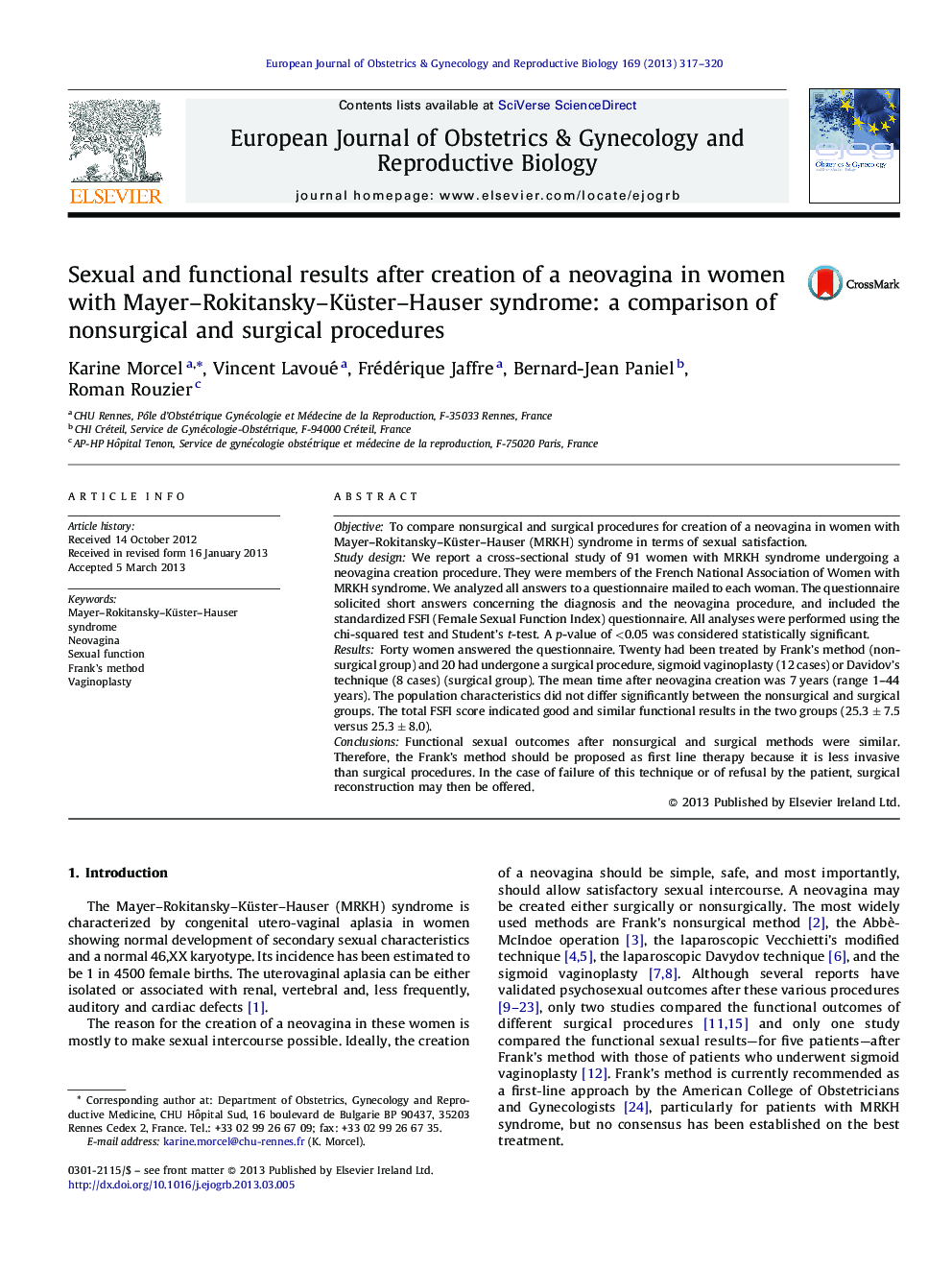| Article ID | Journal | Published Year | Pages | File Type |
|---|---|---|---|---|
| 3919937 | European Journal of Obstetrics & Gynecology and Reproductive Biology | 2013 | 4 Pages |
ObjectiveTo compare nonsurgical and surgical procedures for creation of a neovagina in women with Mayer–Rokitansky–Küster–Hauser (MRKH) syndrome in terms of sexual satisfaction.Study designWe report a cross-sectional study of 91 women with MRKH syndrome undergoing a neovagina creation procedure. They were members of the French National Association of Women with MRKH syndrome. We analyzed all answers to a questionnaire mailed to each woman. The questionnaire solicited short answers concerning the diagnosis and the neovagina procedure, and included the standardized FSFI (Female Sexual Function Index) questionnaire. All analyses were performed using the chi-squared test and Student's t-test. A p-value of <0.05 was considered statistically significant.ResultsForty women answered the questionnaire. Twenty had been treated by Frank's method (non-surgical group) and 20 had undergone a surgical procedure, sigmoid vaginoplasty (12 cases) or Davidov's technique (8 cases) (surgical group). The mean time after neovagina creation was 7 years (range 1–44 years). The population characteristics did not differ significantly between the nonsurgical and surgical groups. The total FSFI score indicated good and similar functional results in the two groups (25.3 ± 7.5 versus 25.3 ± 8.0).ConclusionsFunctional sexual outcomes after nonsurgical and surgical methods were similar. Therefore, the Frank's method should be proposed as first line therapy because it is less invasive than surgical procedures. In the case of failure of this technique or of refusal by the patient, surgical reconstruction may then be offered.
